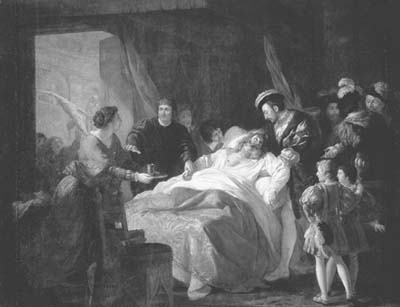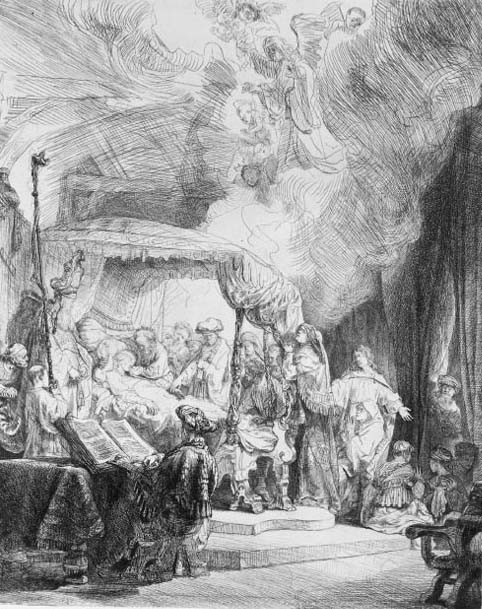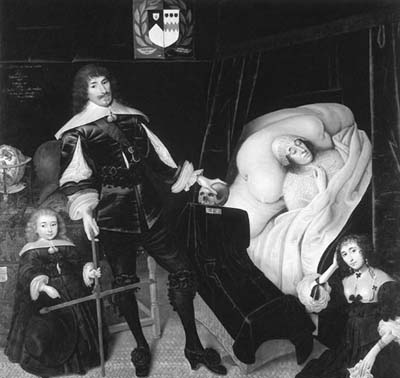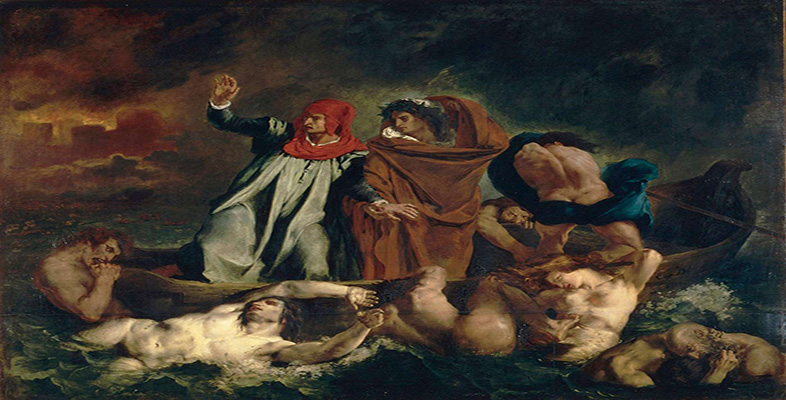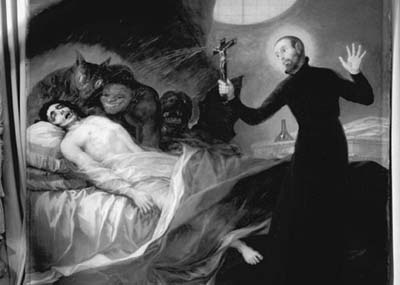2.6 An alternative deathbed tradition
Delacroix does not draw on this neoclassical tradition. He uses an alternative deathbed tradition, in which the bed is artificially raised and tilted towards the viewer to allow a fuller view of the dead or dying. See, for example, Ménageot’s Leonardo de Vinci, dying in the Arms of Francis the First (Figure 3) and Rembrandt’s etching of The Death of the Virgin (Figure 4). Delacroix tilts and raises his deathbed to an exceptional degree, however, so that death completely dominates the surrounding space. In art of an earlier period, this would probably have been attributed simply to a lack of technical competence; see, for instance, Figure 5, John Souch’s Sir Thomas Aston at the Deathbed of his Wife. Delacroix did in fact secure the services of a specialist in perspective to map out the lines of the architecture in the painting: he admitted to difficulties with the rules of perspective. Given the contemporary dominance of the neoclassical aesthetic, however, it is likely that the issues driving his approach went beyond matters of competence. In his painting the conventional, neoclassical horizontal format is subverted by the strong sense of diagonal movement. This subversion of compositional order is reminiscent of Goya’s St Francis Borja attending a Dying Impenitent (Figure 6), in which the corpse, surrounded by blood and demons, appears to slide diagonally from a horizontal bed towards a dark foreground chasm, thus disrupting the underlying geometric framework. Delacroix had been introduced to Goya’s work through his acquaintance in Paris with the Guillemardet family, whose father had served as ambassador in Spain. Earlier than most of his contemporaries, Delacroix became familiar with engravings of Goya’s works, including the Caprichos. It is unlikely that he knew the St Francis Borja, which had been a specific commission for Valencia Cathedral. It is highly probable, however, that Goya’s work and style influenced Delacroix’s works of the 1820s. Like Goya, Delacroix presents death in a way that challenges the static compositions of Neoclassicism.
